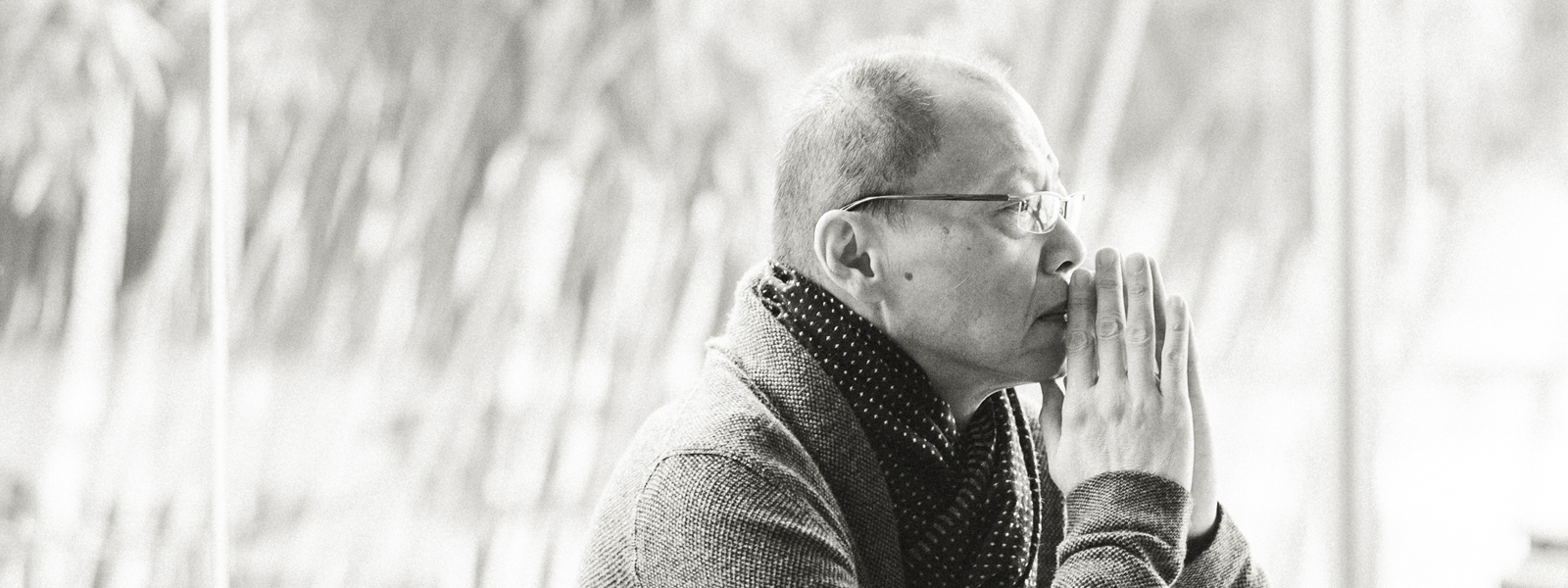
用生命建立的藝術
只有用生命超越
然而,生命中,最重要的因素,是時間。如果時間不可能超越,那麼,面對Lino Tagliapietra的藝術,難免聯想到「最後的威尼斯玻璃藝術」。
深入威尼斯的玻璃歷史,你完全了解近千年的威尼斯玻璃傳統技法,是人類吹製玻璃的歷史巔峰。那些彷彿是魔術的技法,把玻璃藝術帶到一個沒有任何藝術可以仿效的視覺效果。
這樣的藝術,那些近千年歷史的傳統技法,隨著時光,一點一點消逝,只有在博物館裡,在紀錄𥚃,我們可以看見一些例子。
穆拉諾(Murano),作為威尼斯玻璃藝術的主要創作基地,在2000年,數據顯示,仍然有2000家玻璃工廠,但是,今天只賸400家。然而,穆拉諾玻璃工廠的消失,並不是玻璃藝術逐漸失去動力的主要原因,因為,玻璃藝術的提升或者傳承,可能不是穆拉諾玻璃工廠關心的議題。
問題真正的核心是,威尼斯玻璃藝術是一個高度的體能性工藝。我們認識的威尼斯玻璃藝術家,幾乎都以熱吹製技法為主,他們都從十幾歲開始學習吹製玻璃。每個人在吹製玻璃工藝上的累積,都在六十年以上。
吹製玻璃的艱苦,是眾所皆知的,不談玻璃藝術的創作天賦,今天新世代的十幾歲少年,有多少能夠每天面對攝氏一千度的窯爐高溫工作環境?又有多少能夠堅持數十年而勤奮不懈?穆拉諾的玻璃藝術大師的後繼無人,可以想像得知。
了解玻璃藝術創作的前提,那麼,回顧當今世界任何地方,哪裡能夠有威尼斯玻璃的歷史背景?又有一個處處是玻璃工藝的環境?又有願意一生艱苦地致力玻璃藝術創作的十幾歳的少年?我們逐漸明白Lino Tagliapietra在人類玻璃工藝歷史的意義,和在當代玻璃藝術的價值。
1980年前後,Lino Tagliapietra開始受邀到美國工作,在許多著名的玻璃藝術家工作室,例如:Dale Chihuly,以及著名的玻璃藝術學校,例如:Pilchuck Glass School,Lino Tagliapietra帶著他一身的威尼斯玻璃技法,無私地為美國正在興起的工作室玻璃藝術,提供了一個飛躍的技法基礎,提供了無數的玻璃藝術創作的可能。
在蓬勃發展的美國工作室玻璃藝術的環境中,Lino Tagliapietra開始發展自己的創作。那個從威尼斯穆拉諾長大的孩子,今天已經八十四歲,他的玻璃藝術的淵源,遠溯到羅馬時代,歷經七十多年身手的苦修,涵蘊著歲月點滴的積累,他在美國充沛的創作資源的滋潤之下,展示了一個空前絕後的玻璃藝術。
許多玻璃藝術評論家,評論Lino Tagliapietra的玻璃藝術成就,習慣性的用「玻璃藝術復興」的字眼,定義Lino Tagliapietra的藝術成就。然而,對我們而言;在今天暢議藝匠的傳承及創新的思維,我們寧可相信那是一個「人」,以自己的倫理美德,在「時空」的變化更替之中,堅持地以一個樸素的信仰,謙遜地以自己的雙手,身體力行地修持自己對於生命意義,創造了一個不斷地向上超越的美學。
因此,我們的觀點是:Lino Tagliapietra的藝術,在我們今天這個一切講求「快速」,「立即」的時代,展現了一種深刻的反省。而對於充滿虚無,疑惑的所謂現代藝術,我們看到一個誠摯的啓示。
文/張毅
展覽訊息
《再也不會有的Lino Tagliapietra》威尼斯玻璃之神 駕臨亞洲
展覽日期:2017.9.11-2018.3.4
展覽地點:琉璃工房.松菸博物館 松山文創園區(生態池旁)
參觀時間:每日10:30-18:30,18:00停止售票 每週三休館
展覽票價:平日全票250元,假日全票380元
The Significance of Lino Tagliapietra’s Art
Art founded in life can only be transcended through life. Yet at the crux of it all is time. If time can not be transcended, then the art of Lino Tagliapietra could be seen as “last of the Venetian Glass”.
Delve into the history of Venetian Glass and you will realize that traditional Venetian Glass techniques of the last thousand years represents the historical apogee of glassblowing. Seemingly magical, those techniques elevated glass art to a level inimitable by any other art form. Yet through the course of time, the traditional techniques of generations past slowly began to diminish to exist only in museums and archives.
At the crux of Venetian Glass art is the island of Murano. Records indicate that in the year 2000, the island boasted 2,000 glass studios; today only 400 remain. Yet the decline of Muranese glass factories is not the main reason for glass art’s slowing momentum. The glass studios’ lack of advocacy and entrustment of inheritance is what we should be looking at.
The heart of the issue is that Venetian Glass is a highly skilled physical craft. Most Venetian glassmakers we know work exclusively in glassblowing and started apprenticing in their youth. Each individual glassblower has accumulated at least 60 years of experience in the craft. The hardship associated with glassblowing is well-known. Aside from the creative instinct needed to create glass art, how many kids these days would willingly face the suffocating heat of a 1,000° kiln? And then how many persist indefatigably for ten years or more? Who are the heirs to the glass art masters of Murano?
Now that the context of glass art is established, let’s take a closer look – is there another place in the world with a historical background on par with Venice? Is there any other culture that is wholly immersed in glass craft? That raises citizens who are willing to take on a lifetime of hardship in the name of glass? Lino Tagliapietra’s significance in the history of glass and his value to contemporary glass art is quickly coming to light.
In and around 1980, Lino Tagliapietra received several invitations to teach in the US including one from glass artist Dale Chihuly at Pilchuck Glass School. Bearing the inheritance of Venetian Glass, he shared the technical foundation of his homeland with his students and gave boon to the incubating American Studio Glass movement. Immersed in the flourishing American Studio Glass environment, Tagliapietra began developing his personal work, drawing from inspiration as far back as the Roman Empire. The boy whose formative years were spent in Murano glass studios is now 84. For over 70 years he has trained his hands and body to accommodate a life in glass. Applying this experience to dynamic American resources produced art the world had never seen before and will never see again.
When discussing Lino Tagliapietra’s work in glass, critics often apply the term “glass art renaissance” to his achievements. However we prefer to view these achievements as the work of an individual with principles, who within the fluctuation of time and space, insisted on a simple belief. A humble belief that the agility of his hands and the strength of his body could convey his views on life and forge a transcendent aesthetic.
The art of Lino Tagliapietra offers respite from the speed and immediacy of this current age. And within the often hollow vacuum of contemporary art, he offers us the revelation of sincerity.



